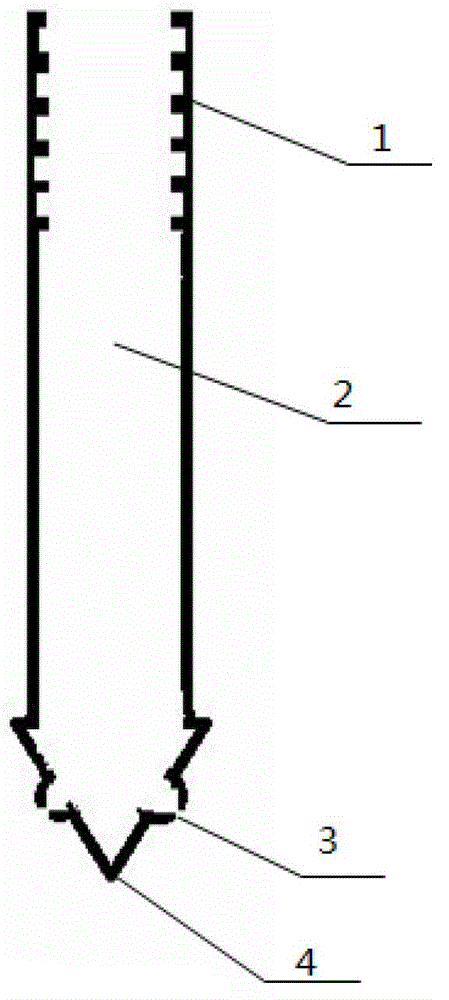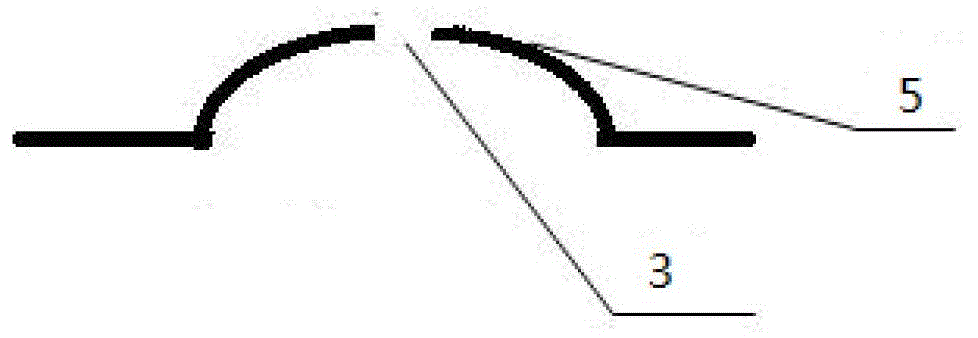Device for inoculating wound roots of plants and application method thereof
An inoculator and plant technology, which is applied in the fields of botanical equipment and methods, application, gardening, etc., can solve problems such as not seen, and achieve the effect of simple use method and fast inoculation speed.
- Summary
- Abstract
- Description
- Claims
- Application Information
AI Technical Summary
Problems solved by technology
Method used
Image
Examples
Embodiment 1
[0019] The acquisition of embodiment 1 plant root endophytic bacteria
[0020] Take the root material of pepper, wash the surface with tap water and dry it, weigh 1g of the root of the plant respectively, soak in 75% ethanol for 3min, rinse with sterile water for 5 times, then soak with 1% sodium hypochlorite for 5min, rinse with sterile water for 5 times . Put the roots into a sterile mortar, add 10 mL of sterile water to each sample, and then dilute to 1×10 -4 , After resting for 15 minutes, take 200μl each and spread on the plate, and repeat 3 times for each treatment. Take 200 μL of sterile water from the last rinse and smear it on the plate to verify whether the disinfection is complete. Incubate in the dark at 28°C for 3-7 days, pick a single colony according to the shape and color of the colony, purify it according to the conventional method, and store it. Results The strains isolated from pepper roots were named LG9 and LJ13.
Embodiment 2
[0021] Embodiment 2 Determination of Plant Endophytic Bacteria Colonization in Roots
[0022] The bacterial strains LG9 and LJ13 isolated from the pepper root that were isolated and purified in Example 1 were used in the literature (edited by Yan Shuzhen and Chen Shuanglin: Microbiology Expansion Experimental Techniques and Methods, Beijing Higher Education Press, published in February 2012, Chapter 4 Experiment 2 ) method for anti-rifampicin labeling, and the labeled strains were formulated into 10 8 cfu / mL bacterial suspension. At the 2-3 leaf stage of pepper seedlings, use a wooden stick to pierce a small hole 2-3cm from the root of the pepper, drop 1mL of bacterial suspension into the small hole, and inoculate 1d, 3d, 5d, 7d and 9d after inoculation. Go out capsicum seedling, stay and get root surface disinfection according to the method for embodiment 1, according to literature (Yan Shuzhen, Chen Shuanglin edited: Microbiology expansion experiment technology and method, ...
Embodiment 3
[0025] The inoculation of embodiment 3 capsicum endophytic bacteria
[0026] Separated from capsicum root according to the method of embodiment 1, adopt embodiment 2 method to prove the colonized endophytic bacterium LG9 bacterial strain, this bacterial strain has anti-rifampicin marker, is formulated into 10 8 Put the cfu / mL bacterial suspension into the WS-16 agricultural sprayer produced by Shandong Weishi Plant Protection Machinery Co., Ltd., remove the nozzle of the sprayer, and replace it with a plant root injury inoculator with a connecting rod length of 8 cm and a cutting head width of 10 mm. . An operator puts the sprayer on his back, and after pressurizing, inserts the inoculator into the soil 5cm above the pepper seedlings (5-6 leaf stage of pepper seedlings), the insertion depth is 5-6cm, and once inserted, the switch of the sprayer is turned on once, that is On and off. Generally, 20-30 pepper seedlings are inoculated per minute. On the 10th day after inoculati...
PUM
 Login to View More
Login to View More Abstract
Description
Claims
Application Information
 Login to View More
Login to View More - R&D
- Intellectual Property
- Life Sciences
- Materials
- Tech Scout
- Unparalleled Data Quality
- Higher Quality Content
- 60% Fewer Hallucinations
Browse by: Latest US Patents, China's latest patents, Technical Efficacy Thesaurus, Application Domain, Technology Topic, Popular Technical Reports.
© 2025 PatSnap. All rights reserved.Legal|Privacy policy|Modern Slavery Act Transparency Statement|Sitemap|About US| Contact US: help@patsnap.com



